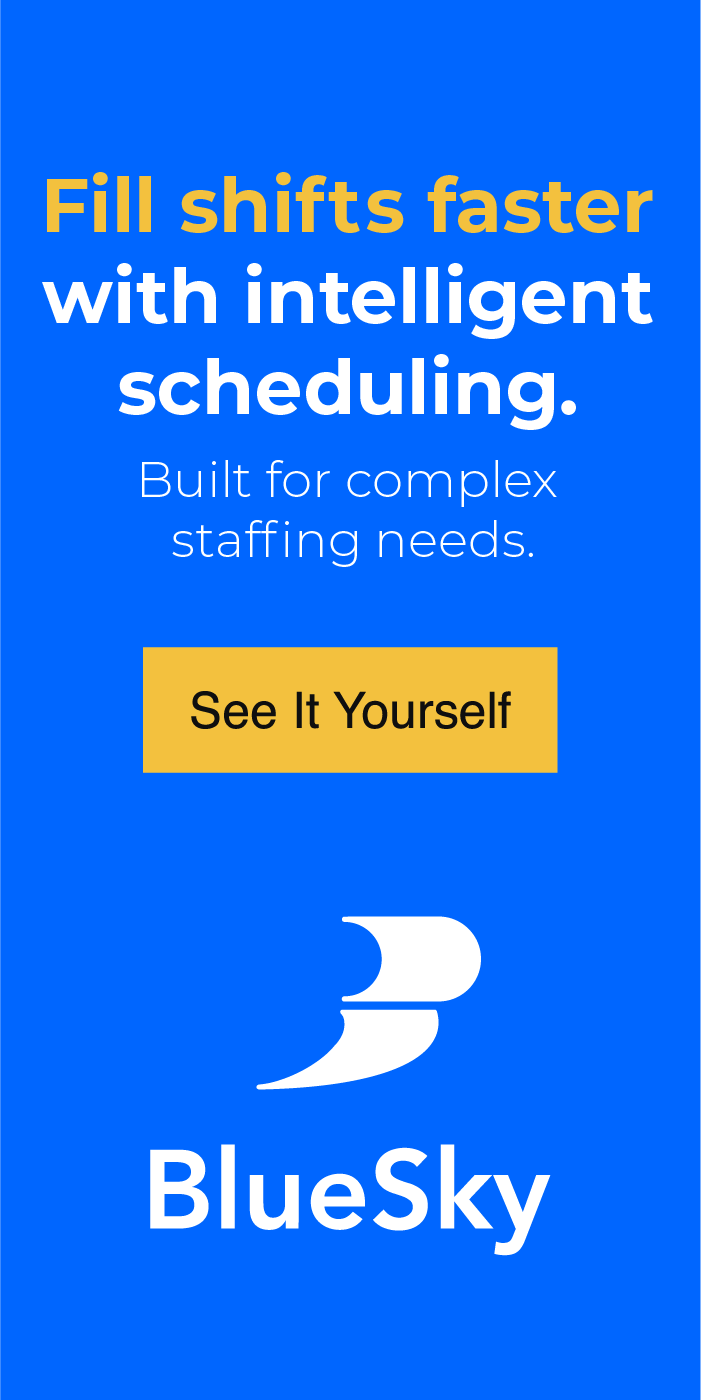Health care providers are increasingly turning to workforce management systems, and the growth seen in this marketplace provides the evidence. According to industry researchers, the health care workforce management systems market will experience a more than 13.8 percent compound annual growth rate through 2019, surpassing a value of $1.4 billion.
“This report studies the workforce management systems market over the forecast period of 2014 to 2019.
The healthcare sector is increasingly implementing the healthcare workforce management solutions to meet challenges such as managing shift differentials of employees to provide quality care to patients, to keep track of the employees, and retain the top talent. The growing need to curtail the increasing healthcare costs with optimum utilization of the available workforce is the primary driver for the growth of this market.”
As more staffing administrators look toward these workflow improvement resources to manage their healthcare staffing, contingent labor, traveling nurses, locum tenens physicians, allied health providers, and permanent employees, it remains crucial to understand the best strategies to support the rollout of the new VMS. Let’s take a look at keys factors for success when switching to a new healthcare staffing software.
1) Plan ahead and be realistic
Before the new workforce management system can be put into place, it’s imperative for staffing and other stakeholders to plan appropriately, and lay out the right foundation to support valuable use of the software. These plans should include making sure the IT infrastructure can properly enable use of the system, that all necessary integrations take place and the platform is configured correctly.
This system can do some serious heavy-lifting when properly implemented. Pass information back and forth between your timekeeping software like KRONOS or ADP. Upload information into your HRIS for compliance purposes. Ensure your FTEs are fully credentialed while you’re at it. This is a method of secure information consolidation and efficiency improvements. Workforce management software is as effective as you allow it to be.
In addition, planning efforts should encompass the schedule for the rollout initiative. Stakeholders must be realistic here, and not rush the rollout, as this could result in users not taking to the solution, impacting the overall return on investment. The implementation schedule should provide adequate time to demonstrate top-down staff member buy-in as well as the necessary user training.
A workforce management system is an essential resource for the HR department and beyond. Management will be making key decisions on operations and staffing based on the information it provides.
2) Lead by example and support use with training
While many of the workforce management system’s features will be exclusively leveraged by the human resources team – including capabilities for creating schedules, recruitment and hiring – there will be cases where staff members outside of the HR team will need to access the system. Whether it’s to chime in on departmental hiring, to ensure proper credential management for employees or to view a schedule, it’s important all stakeholders are familiar with the solution and comfortable using it.
One of the best ways to ensure this level of use is to begin with top-down buy-in, where HR employees spearheading the WMS rollout show their support. Call center solution provider Monet Software suggested appointing a liaison to coordinate the rollout. This person can lead by example, and present a visible symbol of top-down support for the new software. The liaison can lead training sessions to ensure users can navigate the employee-facing features, and can also offer a resource for staff members to ask questions or address any concerns about using the new solution.
All of these qualities pertain to the day-to-day usage of WFM, but contact center managers should not overlook the importance of implementation. Technology cannot benefit a business if it is not easy to use, and if it cannot be incorporated into the center with minimal training. It should also be possible to implement a workforce management solution to deliver break-even status in a matter of months, as opposed to years. But that will take some foresight. While every company and corporate culture is a little different, these guidelines should prove valuable to any contact center in the process of a WFM transition. (Source.)
3) Transition slowly and communicate often
Remember that realistic rollout schedule? It’s imperative that the project liaison and other stakeholders ensure that WMS deployment process sticks to this plan, and that the transition takes place more gradually. Ripping the rug out from under users and forcing them to use a new system in one fell swoop doesn’t just frustrate employees – it can result in the facility not achieving a full ROI and not leveraging the WMS in the most beneficial way possible.
Introducing new functions one at a time or in small batches will be helpful. And it’s important to remind users that “new” or “different” doesn’t automatically equate with “not as good.” Communicate often with users, and incorporate feedback into training and support.
A workforce management system can be a robust resource for health care providers, so long as the new solution is supported with a well thought out and properly executed rollout process.

